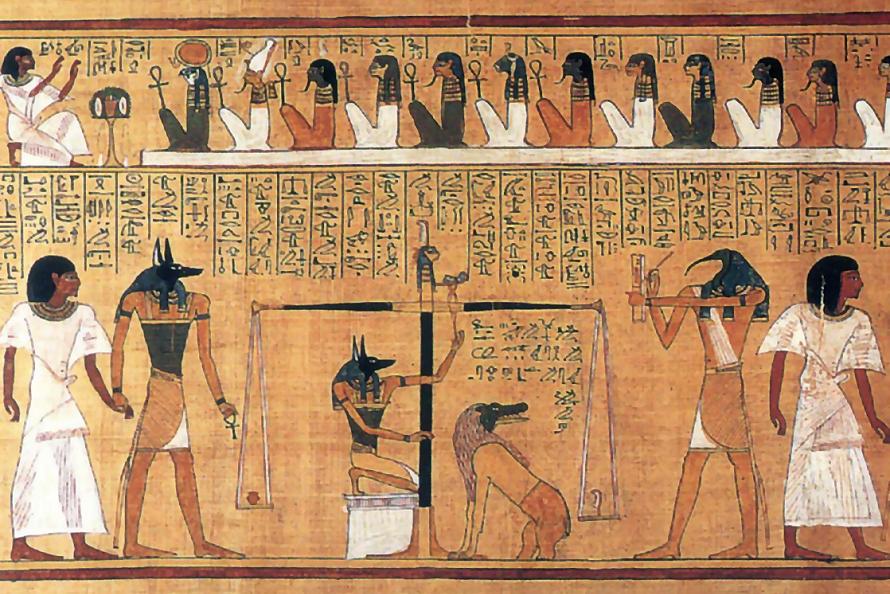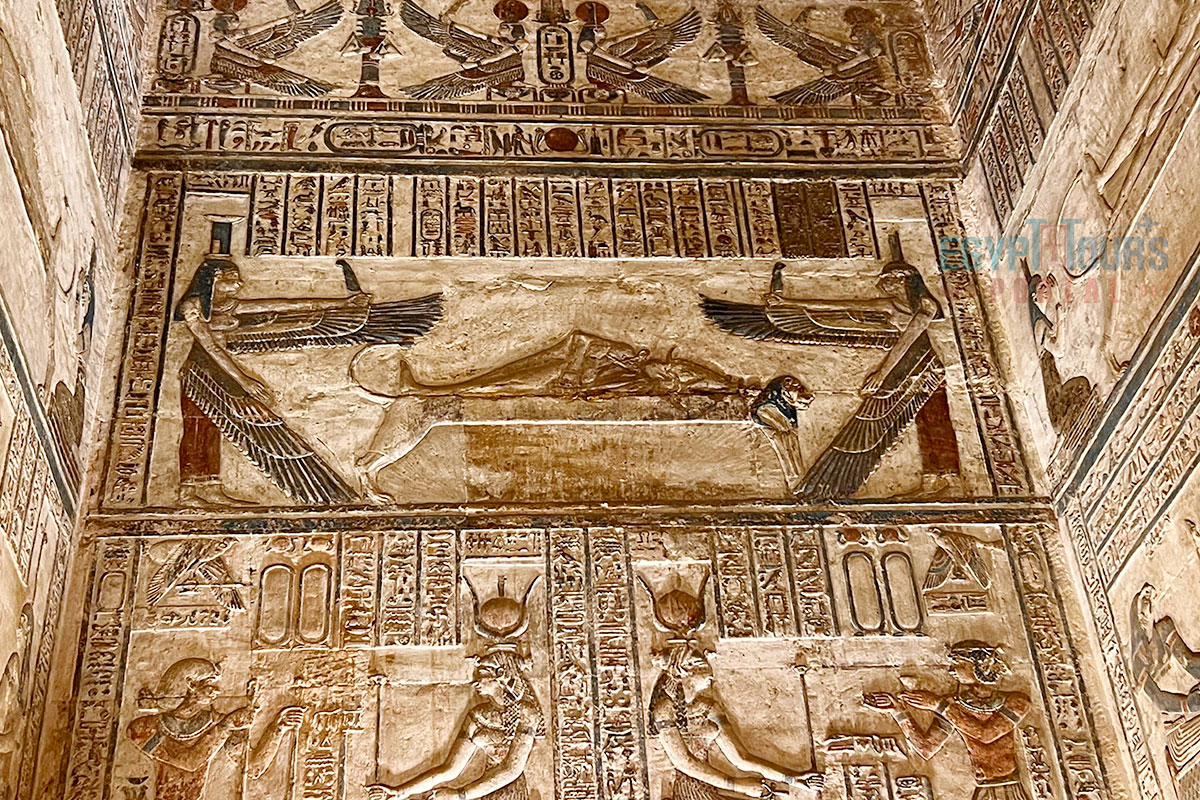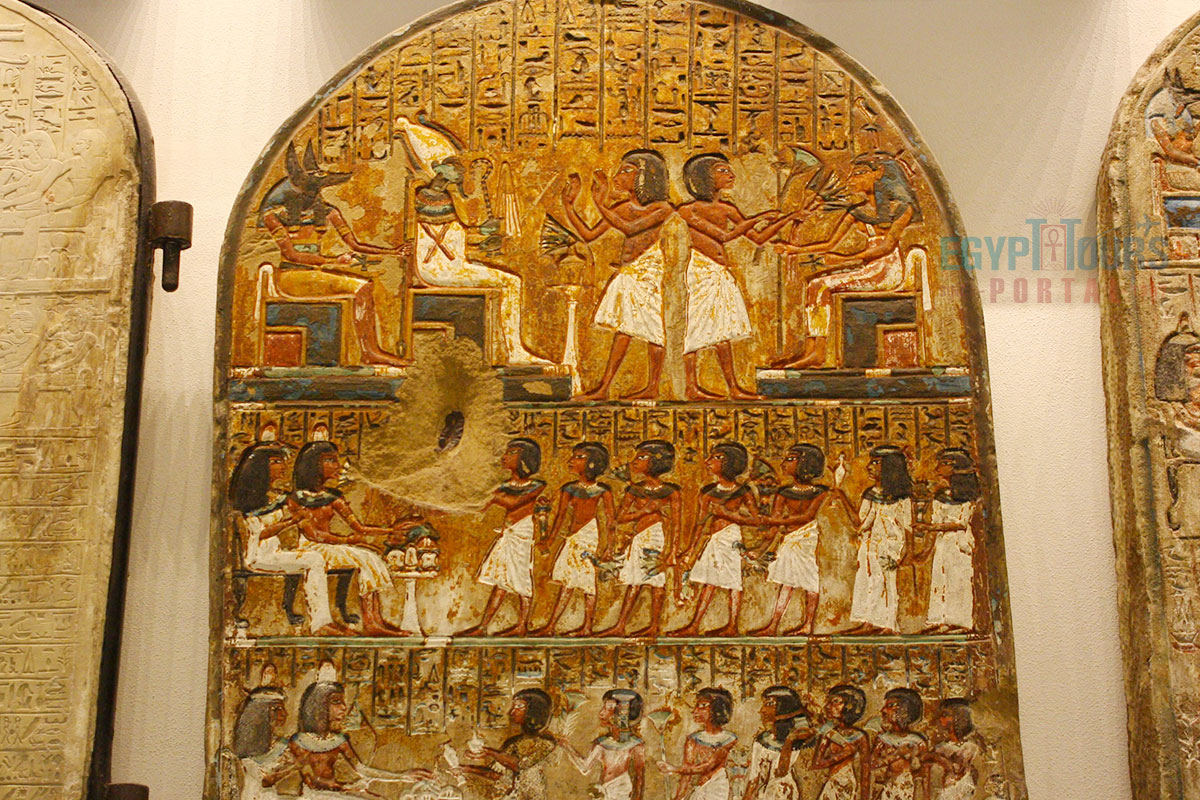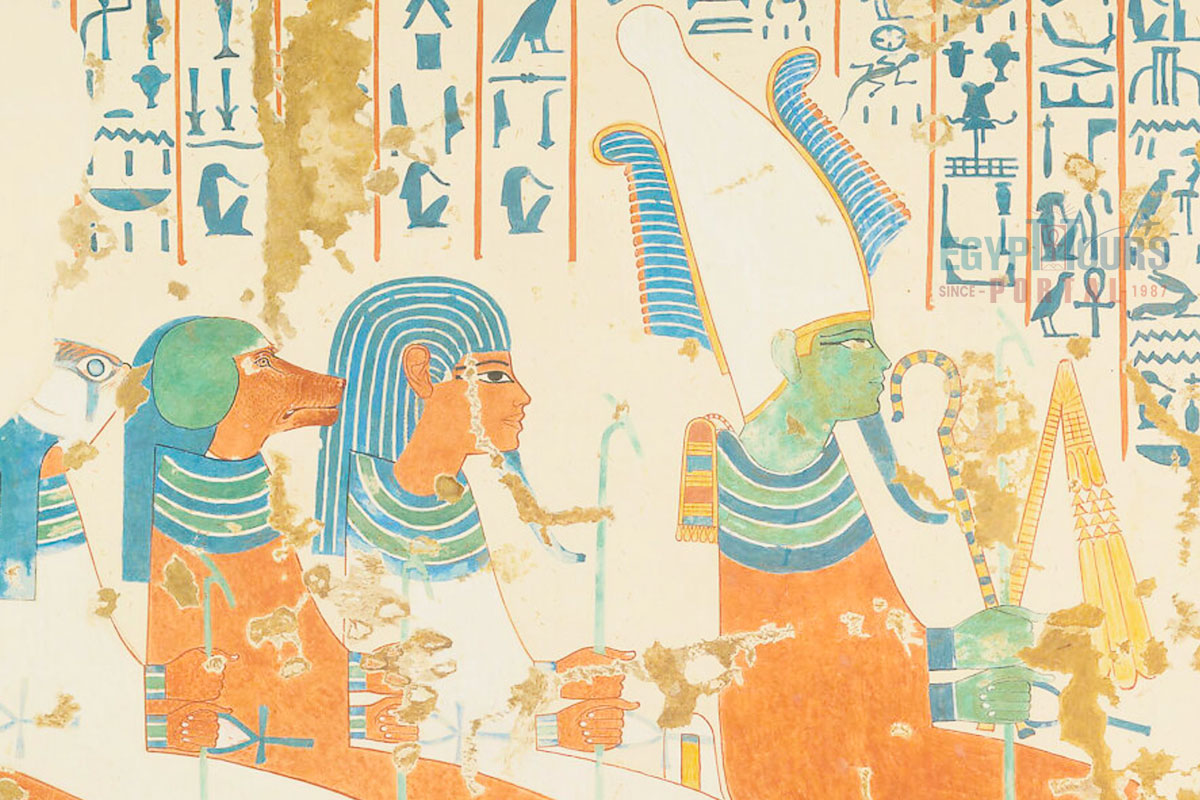The Osiris myth is a key part of ancient Egyptian culture, telling a story of betrayal, death, resurrection, and divine justice. Osiris is killed by his brother Set, but his wife Isis, aided by Anubis and Thoth, resurrects him, making him the ruler of the afterlife. Their son Horus avenges Osiris by defeating Set and restoring order. The myth symbolizes themes of kingship, loyalty, and the battle between chaos and order, shaping Egypt’s religion, society, and views on the afterlife.

The myth of Osiris is one of the most intricate and influential tales in ancient Egyptian mythology that serves as a cornerstone for understanding the religious and cultural framework of ancient Egypt. This tale, interwoven with themes of death, resurrection, cosmic order, and familial devotion, shaped Egyptian beliefs about kingship, the afterlife, and the eternal struggle between harmony and chaos. Through its vivid characters and symbolic events, the Osiris myth conveys profound truths about existence, governance, and the human condition. This article will come to explore the origins, story, and far-reaching impact of this captivating myth.
IMPORTANT NOTE:
This information does not seek to degrade or insult any religion. All the information is based on historical evidence; any similarities that you may find with your faith or religion are from the figment of your imagination.

The Osiris myth first took shape thousands of years ago and appears as early as the Pyramid Texts during the Old Kingdom (24th century BCE). These ancient Egyptian texts are among the oldest known religious writings, and they reference the key components of the myth: Osiris’s death, resurrection, and the struggle between Horus and Set.
Though the myth evolved over time, its basic framework likely originated from the religious practices and social structures of predynastic Egypt. Some scholars suggest that the myth may have roots in real-life events, such as conflicts between early regional kingdoms. Others propose that it arose from a broader cultural need to address universal concerns: the cycle of life and death, the transition of power, and the maintenance of cosmic order, known as Ma’at.

The myth of Osiris is a true wisdom tale that has not only changed the face of the entire mythological culture of Egypt but also affected all the future generations of this immortal civilization to the point where the merits of the tale became a guiding compass for their actions.
Osiris, the eldest son of the earth god Geb and the sky goddess Nut, inherited the throne of Egypt. He was one of the most powerful ancient Egyptian gods, a benevolent ruler who brought civilization to his people. According to myth, Osiris taught agriculture, introduced laws, and ensured prosperity by maintaining harmony with Ma’at. His queen and sister, Isis, stood by his side as a symbol of devotion, wisdom, and magical prowess.
Osiris’s success and popularity incited envy in his brother Set, the god of chaos, storms, and disorder. Set, driven by his destructive nature and desire for power, plotted to kill Osiris and seize the throne.
Set’s scheme unfolded during a grand banquet. He had a magnificent chest crafted, designed to fit Osiris’s exact measurements. At the feast, Set announced that the chest would be a gift to anyone who fit inside it. When Osiris climbed into the chest, Set’s conspirators slammed it shut, sealed it with molten lead, and cast it into the Nile River. Osiris suffocated, and his body was carried away by the river’s currents.
Devastated by the loss of her husband, Isis began a tireless search for his body. Guided by her magical abilities and unwavering devotion, she eventually discovered the chest containing Osiris’s remains in Byblos. A tree had grown around the chest, and it had been incorporated into the palace of the local king.
Isis retrieved the body and brought it back to Egypt, but her efforts to revive Osiris were interrupted by Set. In a fit of rage, Set dismembered Osiris’s corpse into forty-two pieces and scattered them across Egypt, symbolizing the fragmentation of order and unity.
Despite Set’s efforts to obliterate Osiris, Isis refused to give up. With the help of her sister Nephthys, the god Anubis (the patron of embalming), and the wise deity Thoth, she recovered the scattered pieces of Osiris’s body. Using her magical powers, Isis reassembled and embalmed Osiris, making him the first mummy. However, Osiris’s resurrection was incomplete, and he could no longer remain in the realm of the living.
Instead, Osiris descended to the Duat, the Egyptian underworld, where he became the ruler of the dead. In this role, Osiris presided over the judgment of souls, offering eternal life to the righteous and upholding Ma’at in the afterlife.
Witness all the powerful magic of the ancient Egyptian civilization
Read MoreBefore Osiris’s departure to the underworld, Isis conceived their son, Horus, through a miraculous union. Horus, born in secrecy, was raised in the papyrus thickets of the Nile Delta, where he was protected from Set’s wrath.
Horus’s childhood was fraught with danger. Set sent serpents and wild animals to kill the child, but Isis used her formidable magical skills to heal and protect him. Horus’s survival and eventual maturity symbolized hope, renewal, and the perseverance of Ma’at despite chaos.
Upon reaching adulthood, Horus challenged Set for the throne of Egypt, initiating a dramatic and protracted struggle. Their conflict unfolded over eighty years, encompassing fierce battles and legal trials presided over by the Ennead, a council of Egyptian gods.
The physical confrontations between Horus and Set included dramatic contests, such as transforming into hippopotami and racing across the Nile. Horus often gained the upper hand, but the conflict was marked by setbacks. In one notable episode, Set gouged out one of Horus’s eyes, symbolizing the disruption of Ma’at. However, the Eye of Horus was later healed and restored, becoming a powerful emblem of protection, healing, and wholeness.
The gods’ deliberations reflected the complex dynamics of justice, with deities like Thoth and Ra intervening at critical moments. In some versions, Isis played a pivotal role by using her cunning to expose Set’s guilt. Ultimately, Horus was declared the rightful heir to Osiris, and Set was either exiled to the desert or integrated into the cosmic order as a necessary force of chaos.
Horus’s victory restored the balance of Ma’at, bringing unity and prosperity back to Egypt. He ascended the throne as the legitimate ruler, while Osiris, now fully established as the king of the dead, ensured the continuity of life after death. Horus’s kingship symbolized the triumph of righteousness, and his devotion to his father’s legacy underscored the Egyptian ideals of filial piety and divine justice.

The myth of Osiris is rich in symbolism, reflecting essential elements of Egyptian thought:

The Osiris myth profoundly influenced ancient Egyptian religion and society:
The Osiris myth endured long after the decline of ancient Egyptian civilization. Greek and Roman authors, particularly Plutarch, preserved and reinterpreted the story, blending it with Hellenistic philosophies. Isis’s worship spread across the Mediterranean sea, influencing later religious iconography, including Christian depictions of the Virgin Mary and child.
Today, the story of Osiris continues to inspire modern literature, art, and spirituality. It stands as a testament to the power of myth to convey timeless truths about life, death, and the enduring human quest for meaning.
The myth of Osiris, rich in complexity and symbolism, is a timeless narrative that reflects the deepest values of ancient Egyptian culture. Its lessons on justice, loyalty, and renewal continue to resonate, offering profound insights into the human experience. Egypt has a great civilization to discover, live the adventure of mythological dreams by witnessing the majestic temples and tombs during your Egypt tours and Nile cruises.
Private 4 Days Cairo Tour Packages for British Travelers 4 days Cairo Egypt Tour pac...
Tour Location: Cairo – Giza...
5 Days Cairo and Alexandria Tour Package For British Travelers 5 days Cairo and Alex...
Tour Location: Cairo/Giza/Alexandria...
6 Days Cairo, Luxor & Aswan Tour Package For British Travelers 6 days Cairo, Lux...
Tour Location: Cairo/Giza/Aswan/Luxor...
Amazing 7 Days Cairo and Hurghada Holiday for British Travelers 7 Days Cairo & H...
Tour Location: Cairo – Giza – Hurgh...
The entire country of Egypt deserve to be explored with its every heavenly detail but there are places that must be seen before any other such as the breathtaking Hurghada's red sea, The wonders of Cairo the pyramids of Giza, the great sphinx, the Egyptian Museum, Khan El Khalili Bazaar, the wonders of Luxor like Valley of the Kings, Karnak & Hatshepsut temple and the wonders of Aswan such as Abu Simbel temples, Philea temple, Unfinished obelisk and The Wonders of Alexandria like Qaitbat Citadel, Pompey's Pillar and Alexandria Library. Read more about the best places to visit in Egypt.
If you want to apply for a Visa On Arrival that lasts for 30 days then you should be one of the eligible countries, have a valid passport with at least 6 months remaining and pay 25$ USD in cash, as for the E-Visa for 30 day you should have a valid passport for at least 8 months, complete the online application, pay the e-visa fee then print the e-visa to later be presented to the airport border guard. You could also be one of the lucky ones who can obtain a free visa for 90 days. Read more about Egypt travel visa.
Egypt has a variety of delicious cuisines but we recommend “Ful & Ta’meya (Fava Beans and Falafel)”, Mulukhiya, “Koshary”, a traditional Egyptian pasta dish, and Kebab & Kofta, the Egyptian traditional meat dish.
The best time to travel to Egypt is during the winter from September to April as the climate becomes a little tropical accompanied by a magical atmosphere of warm weather with a winter breeze. You will be notified in the week of your trip if the Climate is unsafe and if any changes have been made.
You should pack everything you could ever need in a small bag so you could move easily between your destinations.
We have been creating the finest vacations for more than 20 years around the most majestic destinations in Egypt. Our staff consists of the best operators, guides and drivers who dedicate all of their time & effort to make you have the perfect vacation. All of our tours are customized by Travel, Financial & Time consultants to fit your every possible need during your vacation. It doesn't go without saying that your safety and comfort are our main priority and all of our resources will be directed to provide the finest atmosphere until you return home.
You will feel safe in Egypt as the current atmosphere of the country is quite peaceful after the government took powerful measures like restructuring the entire tourist police to include all the important and tourist attractions in Egypt. Read more about is it safe to travel to Egypt.
Wear whatever feels right and comfortable. It is advised to wear something light and comfortable footwear like a closed-toe shoe to sustain the terrain of Egypt. Put on sun block during your time in Egypt in the summer to protect yourself from the sun.
The best activity is by far boarding a Nile Cruise between Luxor and Aswan or Vise Versa. Witness the beauty of Egypt from a hot balloon or a plane and try all the delicious Egyptian cuisines and drinks plus shopping in old Cairo. Explore the allure and wonders of the red sea in the magical city resorts of Egypt like Hurghada and many more by diving and snorkeling in the marine life or Hurghada. Behold the mesmerizing western desert by a safari trip under the heavenly Egyptian skies.
There are a lot of public holidays in Egypt too many to count either religious or nation, the most important festivals are the holy month of Ramadan which ends with Eid Al Fitr, Christmas and new years eve. Read more about festivals & publich holidays in Egypt.
Egypt is considered to be one of the most liberal Islamic countries but it has become a little bit conservative in the last couple of decades so it is advised to avoid showing your chest, shoulders or legs below the knees.
Arabic is the official language and Most Egyptians, who live in the cities, speak or understand English or at least some English words or phrases. Fewer Egyptians can speak French, Italian, Spanish, and German. Professional tour guides, who work in the tourism sector, are equipped to handle visitors who cannot speak Arabic and they will speak enough English and other languages to fulfill the needs of all our clients.
The fastest way is a car, of course, a taxi. If you are in Cairo ride a white taxi to move faster or you could board the fastest way of transportation in Egypt metro if the roads are in rush hour.
The temperature in Egypt ranges from 37c to 14 c. Summer in Egypt is somehow hot but sometimes it becomes cold at night and winter is cool and mild. The average of low temperatures vary from 9.5 °C in the wintertime to 23 °C in the summertime and the average high temperatures vary from 17 °C in the wintertime to 32 °C in the summertime. The temperature is moderate all along the coasts.
It is the home of everything a traveler might be looking for from amazing historical sites dating to more than 4000 years to enchanting city resorts & beaches. You will live the vacation you deserve as Egypt has everything you could possibly imagine.









